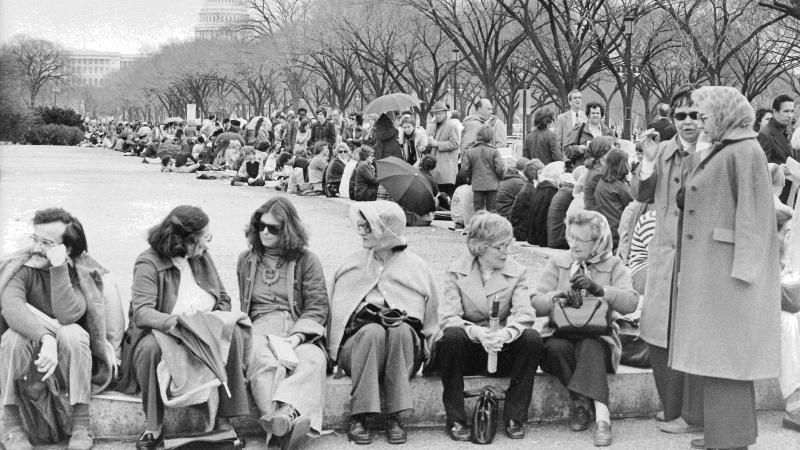If you were around 45 years ago, you too may have memories of The Treasures of Tutankhamun. Mine include a train ride from Philadelphia and a shivering line outside the National Gallery of Art. Tut was a cultural event of late 1970s America that established a benchmark for museums. As one of the first to be called a “blockbuster,” the exhibition was, like the bombs that had given blockbuster movies and books their name, big in every way.
 Most traveling exhibitions don’t come close to the impact of Tut. I had a sobering reminder of that fact early in my years managing traveling exhibitions for an international association of science centers and museums. When we interviewed people who had visited one of our exhibitions, many of them couldn’t remember it at all. So it is in a spirit of humility that I reflect on my years with the science center movement and the unanticipated effects traveling exhibitions can have on the museums that host them and the people who work there.
Most traveling exhibitions don’t come close to the impact of Tut. I had a sobering reminder of that fact early in my years managing traveling exhibitions for an international association of science centers and museums. When we interviewed people who had visited one of our exhibitions, many of them couldn’t remember it at all. So it is in a spirit of humility that I reflect on my years with the science center movement and the unanticipated effects traveling exhibitions can have on the museums that host them and the people who work there.
A sense of mission I use the word “movement” because that’s the best way to describe the science center field in the years after 1969, when the Exploratorium and Ontario Science Centre both opened. Those events crystallized a concept for a new kind of museum—one that put people at the center and a spirit of inquiry and exploration first. Science centers were not about displays of objects, however dazzling, or curatorial lectures, however erudite. They were about the sheer pleasure of learning with all of our senses, of cultivating the courage to ask “why?” There was a sense of missionary zeal.
My organization started managing traveling exhibitions because back then museums were still figuring out how to make exhibitions that reflected a “hands-on” approach to learning, and new-style science centers were eager to share. Over the ensuing years, we helped them put more than 200 exhibitions on the road. (Looking at the Light, from the Exploratorium, was one of the first of these interactive exhibitions. This is the Duck-Into Kaleidoscope.)
But as I look back, I see a movement that became, in the words of many directors (or CEOs as they are now often called), an “industry.” And I suspect that traveling exhibitions that began as a way to share resources and spread the spirit of the movement may have contributed to subverting that spirit instead.
Erosion of the public realm While the sense of a common mission was strong in those days, another dynamic was at work, as inevitably is the case when ideas become institutions: a push for efficiency and economy, an eye on the bottom line. With the best of intentions, we looked for ways to contain costs, manage risks, and simplify the handling of exhibitions for host museums. We began to favor turn-key exhibitions with broad appeal and “marketability,” and developed iron-clad contracts that turned friends into potential adversaries.
The political context was changing, too. As Reaganomics temporarily put an end to federal funding for science exhibitions, belief in the value of the public realm eroded, and more museums were pressed to generate a greater share of their own revenue. In the years that followed, as traveling exhibitions began to attract publicity and increase attendance, more science centers were lured into producing and renting them in the hope of generating income. Commercial enterprises like BBH (later Clear Channel) then got into the act, skimming off the most lucrative exhibition business as they concentrated on the ever-popular themes of dinosaurs, gold, death, and sex.
Experience, commodified The truth is, this commercial aspect of the museum experience had deep historical roots in America, going back to the traveling mummies of the nineteenth century and P.T. Barnum’s profit-making American Museum, which offered investors solid returns and sold experiences sure to please the crowds. But what had happened to the mission of serving as a vehicle for connecting the community and cultivating shared knowledge and expertise? What had happened to human-paced, hands-on experiences? The exhibition had become a commodity, and the museum a machine for producing it. The community had become “targeted audiences,” and relationships, commercial transactions.
Dialing it down It’s time, as a colleague has said, to “dial it down.” Environmental activist Bill McKibben wrote recently, and with hope, that we are entering an era of “small and many.” Science centers and museums may find inspiration in the increasing number of small farms he refers to that use less energy and produce better food than the “big and few.”
To extend the metaphor, consider what Aldo Leopold wrote in that classic of the environmental movement, A Sand County Almanac: “We abuse land because we regard it as a commodity belonging to us. When we see land as a community to which we belong, we may begin to use it with love and respect. There is no other way for land to survive …” (1970). We might say: We abuse museum experiences when we regard them as commodities; when we see these experiences as by and for our community, then we may work in a spirit of love and respect and foresee a more sustainable future.
A longer version of this article appeared in the Spring 2012 issue of The Exhibitionist, the Journal of the National Association for Museum Exhibition.